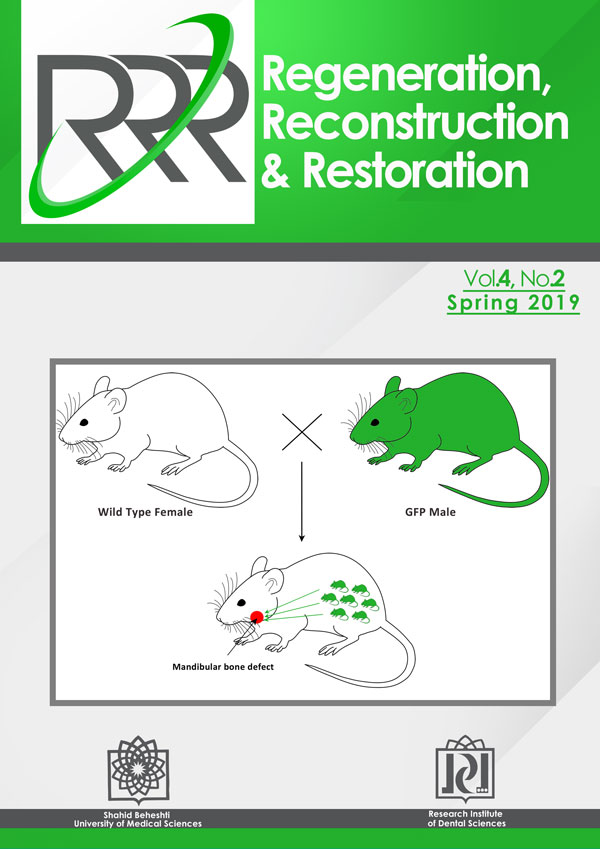Fetal Cells Homing in Maternal Bony Defects: A Preliminary in vivo Investigation
Journal of "Regeneration, Reconstruction & Restoration" (Triple R),
Vol. 4 No. 2 (2019),
14 March 2020,
Page 41-45
https://doi.org/10.22037/rrr.v4i2.29281
Introduction: Fetal cells are present in maternal tissue during pregnancy as well as post-partum. Although their clinical significance is not clear, these cells can be found in injured, diseased and normal tissue. In this study, the authors sought to assess the possibility of fetal cells’ homing in iatrogenic maternal jawbone defects.
Materials and Methods: Eight wild female mice were bred with eight male mice carrying the green fluorescent protein (GFP). Two mice with the same specification were bred with non GFP male mice. A two-millimeter defect was created in pregnant mice mandibles on day 12.5 of pregnancy. The mice were euthanized 4 days later.
Results: GFP+cells were investigated in mandibular defects using immunoflurescent, immunohistochemical staining, and quantitative polymerase chain reaction. GFP+cells were present at defect margins of four cases by all evaluations. GFP+cells were absent in normal tissues and in control mice.
Conclusion: Fetal cells were distinguishable at the margin of iatrogenic jaw bone defect in the mice but their function remain to be elucidate.
